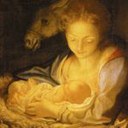0016 Georg Franz Buquoy und "La famosissima Notte"
Identifiers (Article)
Identifiers (Files)
Abstract
In the first half of the 19th century Georg Franz August de Longueval, Count Buquoy (1781-1851) belonged to the leading, but today not very well known personalities of Czech society, science and culture. He authored approximately thirty pieces of writing on various topics, among them a thirteen-pages booklet Worte der Begeisterung vor der Nacht des Correggio (la Notte del Correggio), issued in Prague in 1825. Buquoy's text deals with the painting known as La Notte, painted in 1527-30 by Antonio Allegri, Il Correggio. From September 1746 in Dresden, it has been extolled as one of the most important Renaissance paintings. Buquoy's text has two parts: The "Vorbemerkung" brings standard information about the picture and explains that the poem which constitutes the second part is meant to echo what was executed by the master's brush strokes ("das am Gemälde in des Meisters Pinselstrichen Vollendete, in Worten [...] anzudeuten"). The author tries to convey here his enthusiasm and religious rapture which Correggio's painting woke up in him. The term "Symbol", the key element in Buquoy's poem, comes into it at its close. This term reflects the discussions on allegory and symbol around and after 1800, and the Count used the concept elaborated by Friedrich Schelling in his Philosophie der Kunst. According to Schelling, not only academic or scholarly analysis, but poetic enthusiasm (Begeisterung) as well plays an essential role in the process of understanding the work of art.
Statistics


License

This work is licensed under a Creative Commons Attribution-NonCommercial-NoDerivatives 4.0 International License.



